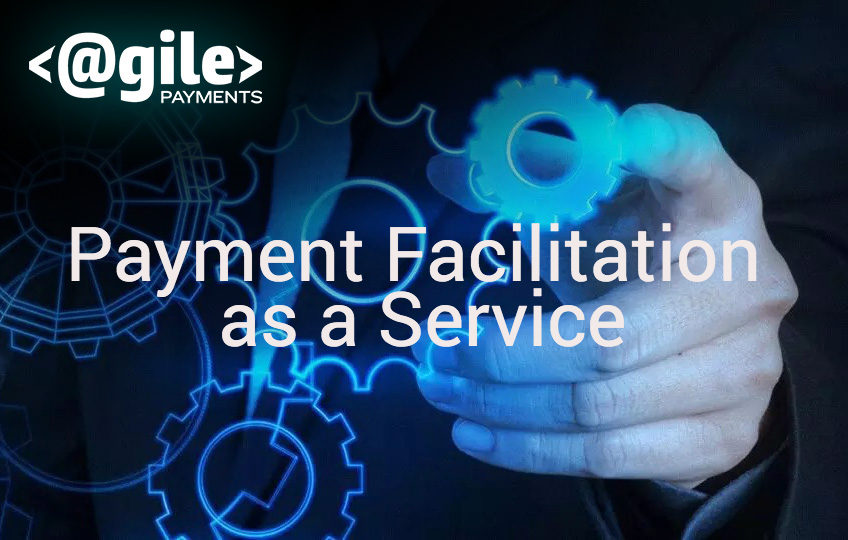Platforms can now monetize payments and onboard users instantly using Payment Facilitation as a Service

What is Payment Facilitation as a Service and how can platforms benefit?
Payment Facilitation As A Service, offers software platforms the ability to both monetize payments and onboard new users instantly.
Essentially the platforms acts as a master merchant account and is able to set up sub-accounts for end users instantly.
The application users complete a simple application and in minutes can begin accepting credit, debit cards as well as ACH [in some cases].
This ability to board customers without having them apply for the traditional merchant account [that can take days and require supporting documentation like bank statements and tax returns] offers friction free onboarding. If instant onboarding is a must Payment Facilitation is the solution.
Becoming a Payment Facilitator or PayFac can be a great fit for SaaS platforms offer a business management app. If there is a payment acceptance need Payment Facilitation bridges that gap.
One example would be a SaaS platform that provides HVAC providers an application that helps them manage their appointments, product inventory, driver route mapping, CRM and payments. The payment collection module is a part [ a very important one] of the SaaS platform offering. Prospective customers sign up for the platform and as part of that they provide business info and their bank account data.
In the past the HVAC operator would complete a fairly burdensome merchant account application, wait up to week or more to be approved, and then somehow enter their credentials into the SaaS application.
Traditional Payment Facilitation involved the platform going through an arduous application process. Think of a home mortgage for 10 million $ and then double the hassle. That process served to mitigate financial risk as the platform operating as the PayFac is funded the money from sub-merchant processing. If there were instances of fraud or wrongdoing the PayFac platform provider was on the hook for financial loss.
Integrating the payment onboarding, processing solution, risk, payout etc typically was a 6-month process.
Add ongoing risk mitigation and compliance costs and it is very easy to see why tru Payment Facilitation is only for the big players.
In the last few years, payment providers have realized there's a sizable market for Payment Facilitator like solutions without all of the expense and hassle.
Enter Payment Facilitation As A Service
In the Payment Facilitation As A Service model you are in essence a sub PayFac. So a true PayFac assumes all those compliance and regulatory and infrastructure costs.
They have created a platform for you to leverage these tools and act as a sub Payment Facilitator. They have a lot of insight into your clients and their processing. This level of insight mitigates much of the financial risk alluded to above.
For the vast majority of platforms it simply makes little sense to become a true Payment Facilitator.
The question then becomes: “Why go down the true PayFac pathway?”
The Payment Facilitation As A Service model does have a downside. In the true PayFac model if “My Medical” was a client of Health Care platform offering payment solutions then a patient sees “My Medical” on their credit card statement. In the Payment Facilitation As A Service model if your Master PayFac is “YourPay” for example, the patient would see “YPY* My Medical” on their statement [descriptor] where YPY* indicates YourPay as the master or true PayFac. This may not be an issue or it may depending on your business model.
Another reason to act as the true PayFac is you own the payment process and that customer. There is no one in between or involved. Certain business may value that. Especially if you are positioning your application to be acquired. Even then the Payment Facilitation As A Service model may still offer better solution.
Payment Facilitation As A Service providers. What to look for in a partner
There are multiple options for both full blown Payment Facilitation providers as well as Payment Facilitation As A Service providers.
What to look for in a partner?
First and foremost: Do they understand what your goals are for both your application and end users?
Some providers are willing to provide the technology but very little insight or support. You are essentially left to figure things out. Adding more more complexity to your never ending list often means you delay getting to market. Your want an actual partner. Someone who is vested in your success, can offer insights that save you time and money and offer insight into your distribution channel. Possible connections are also a big plus.
Have a conversation. Most of the time you will have a connection with the right provider for you.
How does the Platform make money from Payment Facilitation As A Service ?
Revenue is derived simply from the difference in buy rate from the processing networks and the sell rate charged to the end customer. For illustration, if a Payment Facilitator knows their true overall cost amounts to 2.4% of processed volume and they sell at 2.9% their margin is .5% of dollars processed. If they process $10,000,000 per day that works out to $50,000 in revenue per day. The platform shares in this revenue.
